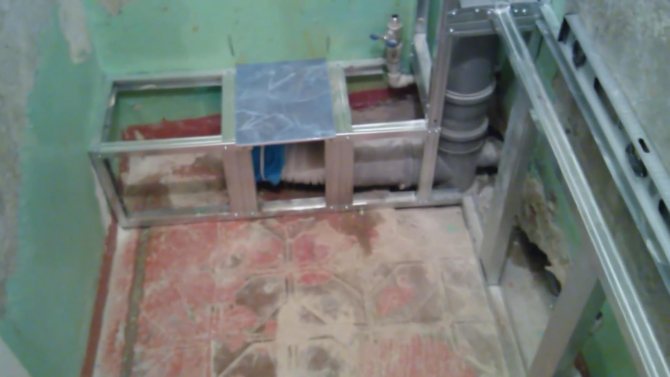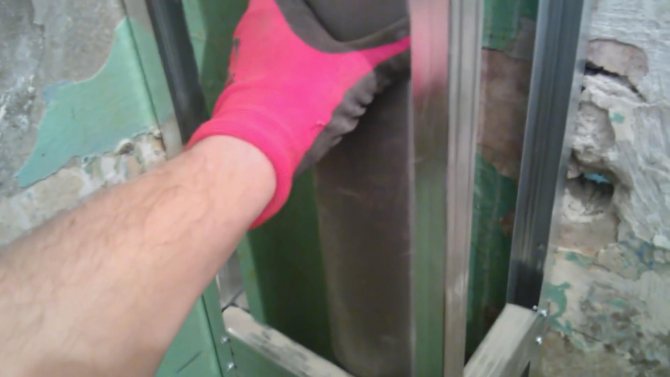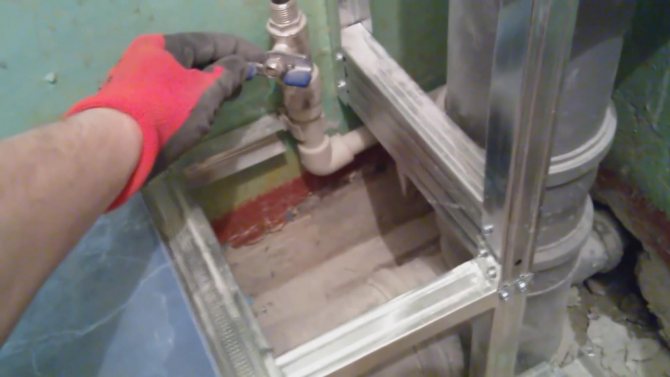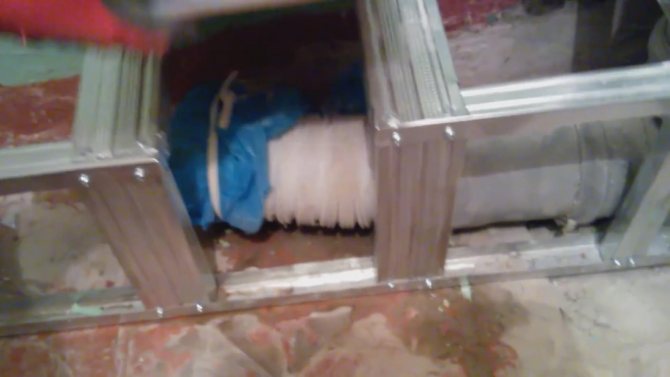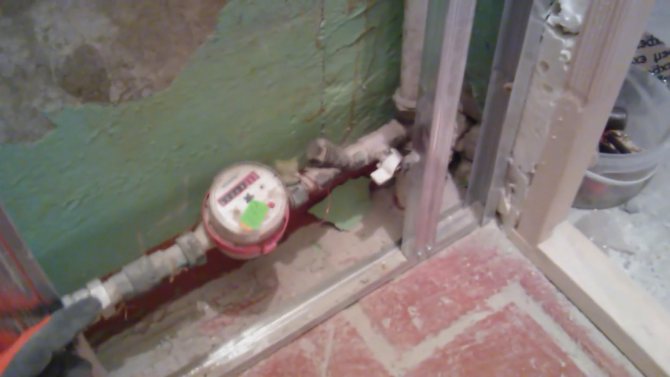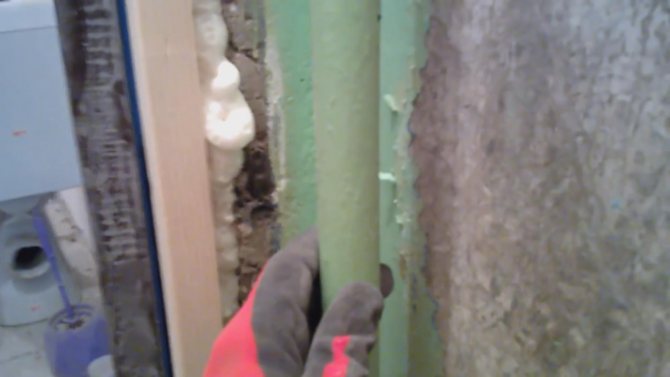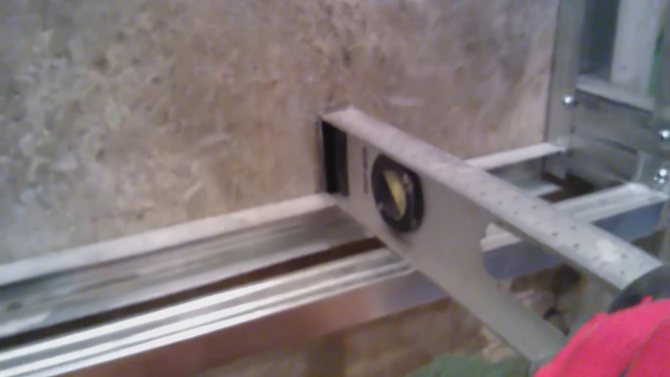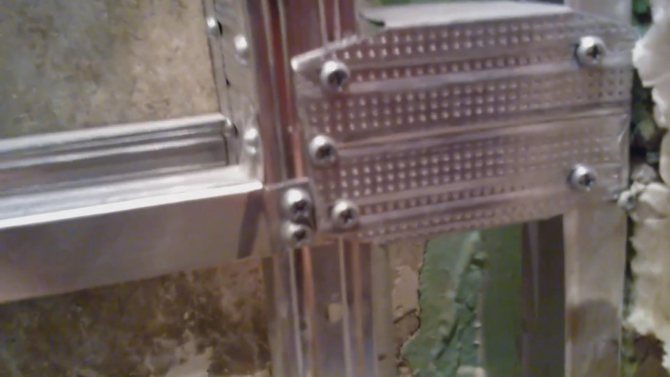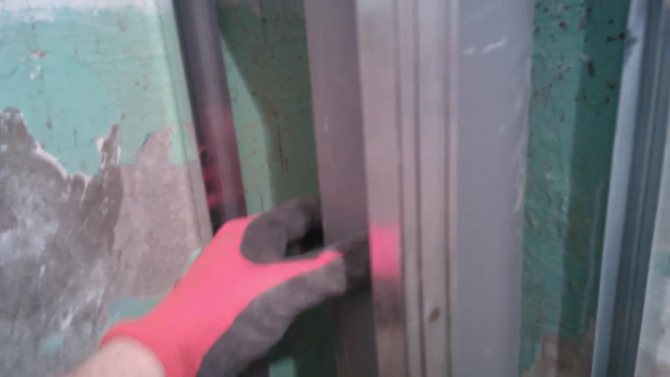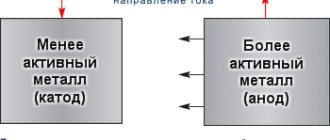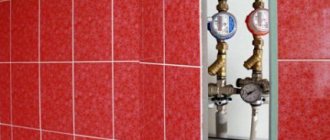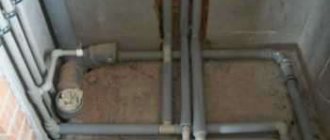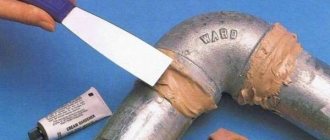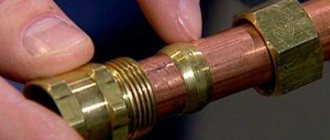Old cast-iron batteries can hardly be called a model of aesthetics, so many apartment owners want to hide them, fitting them into the interior as much as possible. A good solution is a drywall battery box, which you can mount without the involvement of professional builders.
Drywall completely covers the radiators, it is easy to handle and fairly cheap material. But working with it requires certain skills. We hope this article will shed some light on the incomprehensible points and help you successfully solve the problem.
Pros and cons of drywall structures
Our compatriots have been sheathed batteries with plasterboard for a long time, so there are many useful developments in this area. Why is this material so popular?
Here are the main benefits of drywall:
- Environmental friendliness (no harmful substances are emitted in the premises, and the fire resistance of the box is very high).
- Versatility (an extensive range of drywall varieties is presented in hardware stores).
- Budget (the material is very cheap).
- Ease of installation (any adult man will cope with the task).
- Plenty of room for imagination (you can tinker with designs of any degree of complexity).
Before you start plating the battery with drywall, you must find out the whole truth about the disadvantages of such a solution. You will encounter some things during the installation process, others will appear during the operation of the box.
So the cons:
- Fragility (the material crumbles easily, so you need to work with it carefully).
- The need for additional finishing (after installation, arm yourself with a spatula).
- Low moisture resistance (drywall warps, swells and deforms from water).
- Storage features (by placing the sheet vertically, you will find over time that it began to bend).
Preparatory work and markup
Have you decided to sew up the heater yourself? Any finishing work requires serious preparation.
Let's start with the selection of tools:
- building level;
- metal knife;
- drill (the presence of a screwdriver nozzle is welcomed);
- pliers;
- puncher;
- dowels and screws;
- corner ruler;
- pencil;
- roulette.
In addition, you will need gypsum plasterboards themselves, putty and U-shaped metal profiles. Then you need to select a sketch of the structure. You can build a cabinet under the heater (standing version), or make the box hang above the floor. Make sure the battery looks decent. If the old paint has peeled off, it must be completely peeled off and the instrument repainted.
Marking for a box
After waiting for the paint to dry, proceed to the marking. You will have to make accurate measurements of the battery (tolerances within a millimeter are allowed).
Use the following toolkit for this:
- roulette;
- building level;
- a square ruler;
- pencil.
The width and depth of the structure depend on the dimensions of the radiator. At the edges, the minimum indentation should not exceed 10 centimeters. Narrow window sills need to be dismantled, since the gap between them and the battery must be at least 3 centimeters.
Drawing the markup is conventionally divided into three stages:
- Draw horizontal lines. You will draw a line along the hanging level. If you plan to install a "standing" box, draw three lines at once (depth and leading edge).
- Application of vertical markings. Place a square on the bottom edge, draw a perpendicular. Use a spirit level to mark the required size.
- Markup connection.The lines must close over the battery. The horizontal segment has a unifying function.
Make sure that you have a square (or rectangle) in front of you, the vertical lines of which correspond to the plumb line. Double check the accuracy of the markup - you cannot correct the shortcomings later.
Installing the frame
Before covering the battery with drywall, it is necessary to mount the metal frame. You have profiles, dowels and screws that will hold the future structure together. Arm yourself with metal scissors, hammer drill, screwdriver and pliers. First, you need to cut and fix the supporting elements, they are mounted on the wall as follows:
- The U-shaped profile is pressed against the wall by either side.
- A small mark is made (use a screwdriver).
- Holes are drilled for fasteners.
- The dowels are inserted into the holes.
- The profile is pressed to the desired location.
- Screws are screwed in.
The holes in the profile are marked with a pitch of 15-25 centimeters. Make the markup in advance, otherwise you will experience a number of inconveniences during installation. Now attach all the prepared guides to the wall. Use metal scissors on corner joints. The next stage is the formation of the depth of the box.
Procedure:
- Cut the profile pieces to the desired length.
- Make five centimeter notches around the edges of the fold.
- Fold the middle down.
- Cut off the sides using the channel shelf.
- Attach the pieces to the edges of the vertical guides at right angles (make sure the pieces are oriented towards the interior of the room).
- Connect fragments with long profiles.
It's time to check the quality of the work. If the structure is loose, you did something wrong. For example, they "regretted" short elements or made a mistake when installing fasteners. When installing long fasteners, it is better to reinforce the frame with short segments (4-5 pieces are enough), then you will like the result.
Tighten the screws carefully, otherwise you will damage the profile. A kind of window is left in the frame for installing a removable screen. This will ensure a constant flow of heat into the apartment.
How to sew up pipes with plasterboard
Before proceeding directly to work, it is necessary to prepare everything that may be needed.
It:
- Sheets of moisture-resistant and high-quality drywall;
- Metal profiles for wall mounting;
- Self-tapping screws;
- Screwdriver or screwdriver;
- Scissors cutting metal.
Installation of plasterboard construction is quite simple and does not involve time-consuming operations. All necessary work should be carried out strictly according to plan.

It should be sewn up in stages:
- First of all, you should make the correct calculations. Calculations are carried out taking into account the fact that there should be free space inside the box, which provides free access to gas communications. The outer part of the structure should fit snugly against the wall.
- The next step is the preparation of metal profiles.
- Next, you need to cut and prepare the required size sheets of drywall. For this, pre-prepared metal scissors will come in handy. After that, parts of the drywall are attached to the metal profile with self-tapping screws.
- The final stage is external finishing work.
The main feature of this material is that any finishing work can be carried out on its surface. This makes it possible to stylishly and beautifully finish the plasterboard structure without violating the design idea.
Working with drywall
Time-consuming work has been left behind. Now we hide our battery under the drywall, and for this we need to cut rectangles of the appropriate sizes.
Sequencing:
- Attach the plasterboard to the profile frame.
- Apply a marking on the surface of the sheet, mark the places of the cuts.
- Take a clerical knife and carefully cut the elements according to the dimensions of the box.
- Lean the prepared fragments against "your" parts of the structure.
- Fasten the drywall rectangles with screws.
The drywall that covers the battery is very fragile, so the knife must be sharp. There should be 3-4 self-tapping screws per running meter of drywall. The hats are recessed by a millimeter so that they do not tear the cardboard cover.
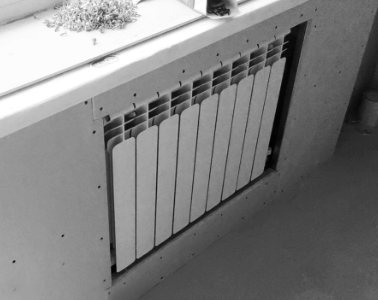

An important point: the room must receive warmth. There are two ways to solve the problem, the simplest of which is to drill ventilation holes in the sheets (their recommended diameter ranges from 5 centimeters). A more aesthetic solution is the installation of a removable grille. If you decide to equip the front wall with a plastic screen, please be patient and additional fasteners. Plastic cracks sometimes, so handle it carefully.
What pipe elements should not be masked
Metal pipes can be completely covered under tiles.
- with threaded connections, taps;
- with fittings that need to be tightened;
- angle-type connections, tees, crosses, where there is a high probability of leakage;
- where the counters and filters are installed.
Fully covered under plaster, tiles can be pipes made of metal, plastic without threaded and welded joints. Then the probability of leakage is reduced to zero, you do not have to break walls to fix the malfunction.
Final finishing
Now you know how to sew up a battery with drywall. In order for the box to take on a finished look, it must be properly finished.
Algorithm of actions:
- The joints between drywall sheets are carefully sealed. You should get a smooth surface ready for further processing. First, you need to apply a serpyanka mesh to the joints. After that, the surface is putty.
- The places in which the fasteners are installed are processed in a similar way.
- Want to strengthen corners and sharpen lines? Place perforated corners on the drywall.
- The box is putty.
- After drying, the walls are leveled.
- The final stage is grinding (fine-grained sandpaper is used for this).
Having coped with the finishing, you can start decorating your box. The finishing technique will depend on the features of the interior and the overall color scheme.
Other solutions
You can close the batteries in the room not only with drywall sheets. Some apartment owners mount standard boxes from this material, and change the front panel to something more original.
Here are the most typical solutions:
- Radiator grill (plastic or metal). Among the advantages of such designs, it is worth noting good heat transfer and constant access to the battery. The main disadvantage is the trivial design.
- Built-in niche. The pipes are covered with casing, and the battery itself is hidden behind a folding screen. The main advantages are the ease of accessibility of the unit in the event of a breakdown and minimal heat losses. A good option for a kitchen where space saving is relevant.
- Wooden wall-lattice. In harmony with classic interiors, it allows you to quickly get to the battery in an emergency. Cons - bulkiness, low functionality.
The technique of installing a drywall box is quite simple, anyone can master it in a short time. Don't let radiator pipes ruin your interior.
Coming home again and looking around the room, my eyes settled on the ugly cast-iron edges of the battery, which had already peeled off and instead of white they had acquired a dirty gray tint.
I decided not to postpone this problem for a long time and began to think how to do it.
Someone might think that making screens for radiators on their own is unnecessary trouble. After all, you can buy a decorative headband and thus solve the problem. But not always the finished products are right for your battery.I had two metal screens at home for a long time, and still one was sticking out to the side, since the size was not quite suitable for radiators.
Making screens for batteries is not that difficult, the design is quite simple. You can install it yourself, it will turn out inexpensively. The most suitable material is drywall. It is easy to use and easy to cut and cut. In addition, all the necessary connecting elements are available for sale in any hardware store. Also, you do not need complex construction tools, they are usually available in the house.
All pros and cons of masking pipes in the bathroom
There are positive aspects to masking pipelines:
- the interior of the room improves, communications become unobtrusive or not at all visible;
- with hidden installation, the space of the room is not selected;
- disguise with furniture creates a beautiful interior, space for convenient storage of various small items.
Negative points:
- Poor installation or materials lead to leaks, breakouts.
- Access to pipes is limited, except for the version with roller blinds.
- In case of an accident, the structure has to be disassembled, in some cases without the possibility of recovery.
- Strong leakage of pipelines with hidden installation is not immediately detected. It may be necessary to repair not only at home, but also at neighbors.
- Even moisture-resistant furniture in the bathroom serves less than in dry rooms.
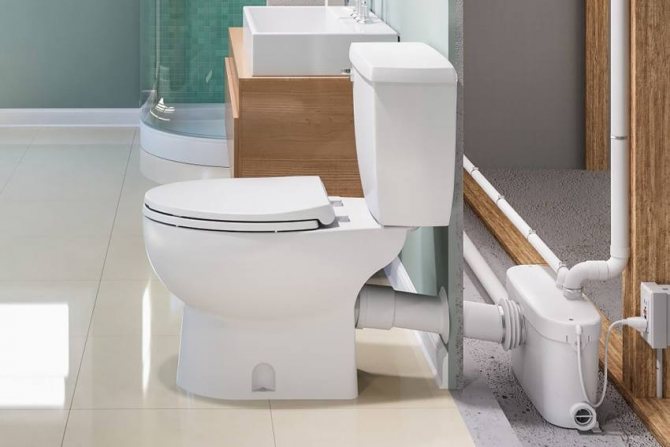

Despite the negative aspects of disguise, you should not give up on it. A competent approach to installation will ensure the reliable functioning of the system.
Finishing
After the box is assembled, all the seams are closed, the corners are reinforced with corners, mesh and putty. Putty is applied, then a corner, mesh is attached, then putty again. After drying, the surface is rubbed with sandpaper. The final step will be painting or wallpapering your screen.
In some apartments, it may be more expedient not to install a screen, but to completely close the heating battery together with pipes with a plasterboard false wall.
Watch the video how the installation of such a false wall is performed
It is not necessary to do it yourself Installing the screen on the battery can also be made to order, but only yours.
Perhaps the purchased screen will not fit well into your interior, and the drywall will make up a single whole.
10818 0 2
Any house has utilities: gas pipes, water supply, heating and sewerage pipes. Without them, your apartment will lose its comfort; however, chimneys left in plain sight rarely decorate a home. In my article, I will talk about ways to hide highways and related restrictions.
Gas
- Is it possible to hide gas pipes in an apartment
?
Where there are no threaded connections on them - of course. Gas-fired steel pipes, provided that the paint on their surface is preserved, do not rust or wear out, their service life is practically unlimited.
Exception: do not close the steel gas pipe at the entrance to a private house. In winter, when the temperature outside is noticeably lower than in the house, cooling the bushing with gas consumption will cause condensation to drop out on it. On an open pipe, it will quickly evaporate, and on a closed pipe, it will eventually lead to rust.
- Is it possible to close gas pipes with plasterboard on a galvanized frame
?
The material of the box or niche at a distance from the stove does not matter. Absolutely any finishing materials can be used - gypsum board, gypsum plasterboard, wall panels, plywood, OSB, etc. But near the slab for the box, it is better to use non-combustible materials, including drywall.
- Is it possible to sew up a gas pipe at the connection with a gas meter
?
Not. All threads, taps in front of gas appliances and the meter itself must be accessible for dismantling and maintenance. If there is a leak at any connection, the accumulation of gas in the box is simply dangerous, besides, it will interfere with identifying this leak and carrying out repair work.Do not forget about the need to check the meter: after a few years it will have to be removed.
Characteristics of material and work
Drywall sheet structure.
Plasterboard sheets have a multi-layer structure, they consist of gypsum, which is decorated with stiff paper. Standard sheets have a size of 2.5x1.2 m.For example, one such sheet will be needed for facing a fan pipe. The material is environmentally friendly and does not emit harmful substances when heated, moreover, it is affordable and easy to use.
It is believed that he is afraid of moisture. Yes, it is, but this problem has been solved for a long time: there is a moisture-resistant drywall, it has a greenish color.
For sheathing the pipe with drywall, it alone will not be enough, the material must hold on to the frame. In this way, a plasterboard box is formed, the frame of which has vertical and horizontal elements. The former alternate with a distance of less than 60 cm.
The final stage in the production of the frame consists in sheathing its profiles with sheets of drywall. In this case, simple self-tapping screws are used, the heads, which must be sunk into the material.
Such work does not require special qualifications and professional skills, it is enough to know how to use the usual tools, the list of which is indicated below. It is very good when the master has the skills to work with the material, for example, creating partitions or other plasterboard structures.
Heating
Central
- Is it possible to close the heating riser under the drywall
?
It is possible, but with a number of restrictions. The steel riser should be replaced with a corrugated stainless pipe with maintenance-free compression fittings and only on it, and not only from floor to ceiling, but also in both ceilings - common with the lower and upper neighbors.
Steel pipes are known to corrode. The first through holes appear where the metal is thinner - on the threads of the connections and on the welds.
In addition, a solid pipe with a constant wall thickness rusts the fastest in the ceiling - with quite predictable consequences.
Replacing black steel pipes with galvanized steel increases the service life of the riser and connections many times: after half a century of operation, opened pipes in stalinks do not differ from new ones. However, they can only be assembled on the threads: in the area of the weld, the zinc completely burns out.
Reference: the melting temperature of steel is 1300 - 1400C. The boiling point of zinc is about 900C. Welding galvanized steel, you get a pipeline, which has only the price of galvanized steel: the seams will rust just like a black steel pipe.
Well, each thread is a place of potential leakage: flax burns out over time, and synthetic windings often leak at the slightest reverse thread (for example, if a neighbor turns the riser slightly when replacing the battery or starts cutting threads on it).
The photo shows a threaded liner from a galvanized pipe.
All polymer and metal-polymer pipes are not resistant to water hammer, which are not uncommon when starting heating. Sufficiently for an inexperienced locksmith quickly open house valves
when filling the circuit - and the pressure at the front of the water flow at a certain moment will reach 30 - 40 kgf / cm2, while reinforced polypropylene is designed for 25 atmospheres, and metal-plastic - for 10 - 16 at all.
A good alternative to corrugated stainless steel would be copper on soldered joints, but the problem is that it forms a galvanic pair with aluminum, which leads to an electrochemical one of the metals, and aluminum radiators are not uncommon in heating systems.
Note: the water in the central heating system is an electrolyte due to the dissolved mineral salts and metal oxides in it.For the occurrence of electrochemical processes, the metals forming the galvanic pair must only be at a small distance from each other in a common circuit filled with electrolyte.
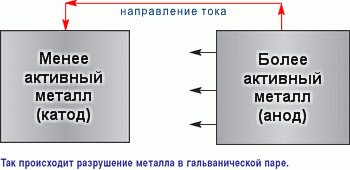

- Is it possible to sew up the battery with drywall or other materials
?
There are different opinions on this, but I, in the past, a plumber with solid experience, consider the construction of a box around a radiator to be the greatest nonsense.
There are several reasons:
- The radiator connections are detachable and leak from time to time. Doing repairs inside a box that does not allow turning the union nut or radiator plug with a wrench is not ice;
- On the upper floors, the radiators are supplied with air vents. The box deprives the owner of free access to the Mayevsky crane;
- Batteries require flushing from time to time. Installing a flush valve inside the box and connecting a hose to it ... let's say politely, it's not easy;
- All sectional radiators suffer from leakage between sections. They are most typical for cast iron batteries, but aluminum ones are also not alien to this problem. The box will not allow you to remove the heater or sort it out on the spot;
- Finally, think for yourself: how to sew a battery without reducing its heat transfer? Heat is transferred by convection and heat radiation; A solid box of any design will limit the transfer of thermal energy in both ways.
- How to close the heater without reducing its heat transfer and keeping free access to it?
But this is the right question.
Use a removable decorative screen. It should be dismantled as simply as possible, if possible without tools and be mesh or lattice from all sides, including from above.
Autonomous
- Is it possible to close or sink heating pipes in the wall in an autonomous system with its own heating boiler?
Yes - provided the pipe connections are maintenance-free. These include:
- Welded socket joints of polypropylene and PE-RT pipes;
- Brazed copper pipe joints;
- Connections of the notorious corrugated stainless steel on compression fittings;
- Press fittings on metal-plastic;
- XLPE on sleeved fittings.
The choice of pipes in this case is a matter of taste for the owner: with its minimum rationality, the parameters of the heating system are completely controlled and stable. The pressure in the autonomous circuit does not exceed 2.5 kgf / cm2.
If you close steel pipes or any material with serviced joints (for example, metal-plastic on compression fittings), then you will create problems for yourself with your own hands. The box will have to be disassembled at the first leak.
How to avoid mistakes: rules
To properly hide pipes in the bathroom, you need to familiarize yourself with the key rules of the process. Before you hide the communications, you need to think over the design of the future decor in such a way that the pipes have access. Counters, as well as threaded connections should be “at hand”. Knowing the rules, you can avoid mistakes and shorten the repair time.
Experts recommend using the following recommendations in your work:
- make sure the communications are working properly. Many people forget to slope the sewer pipes when they close them behind the box;
- when plumbing or sewer pipes are hidden, it is necessary to provide access to the taps. For this, an inspection hatch should be equipped in the box;
- threaded connections are the weakest points of pipes. Therefore, you need to monitor the tightness of the joints, the condition of the sealant used. And also you need to make plumbing hatches, which will allow you to make repairs when a leak occurs;
- before closing communications, you should decide on the location of household appliances. If you neglect this procedure, in the future, difficulties may arise with the summing up of new equipment.
Many mistakes can be avoided if only high quality materials are used in the work.And also, accuracy is important during repair activities. Neglect of these rules will lead to the fact that leaks will appear in the future, which will entail parsing the box and costly repairs.
See below for more details.
Before hiding the pipes behind decorative masking, you should think about which finishing method is suitable for the interior. They also do not forget about practicality, but if it is decided to disguise the pipelines, aesthetics plays an important role.
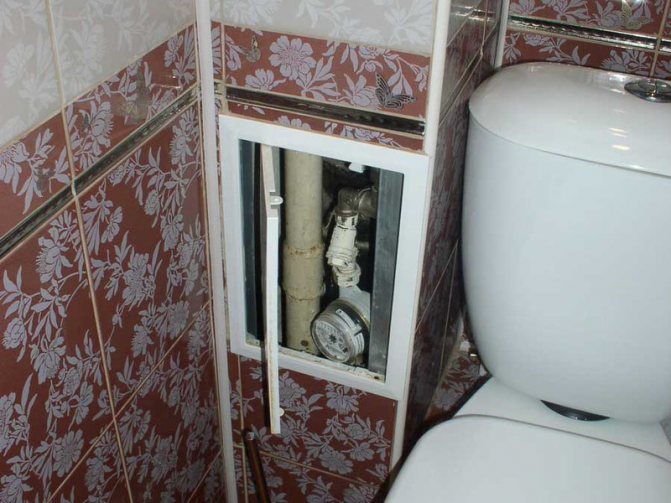

In order to have access to the meters and pipes, it is necessary to leave the viewing windows.
It is advisable to draw up a plan or mark the pipe laying on the wall. If they have already been laid in an open way, outline the contours of the camouflage elements.
If, nevertheless, it is decided to lay pipelines with thread, soldering or welding in the grooves, it is not recommended to immediately close them with finishing materials. Give a few days for the pressure test and at rest. After the confidence in tightness has come, the grooves are closed.
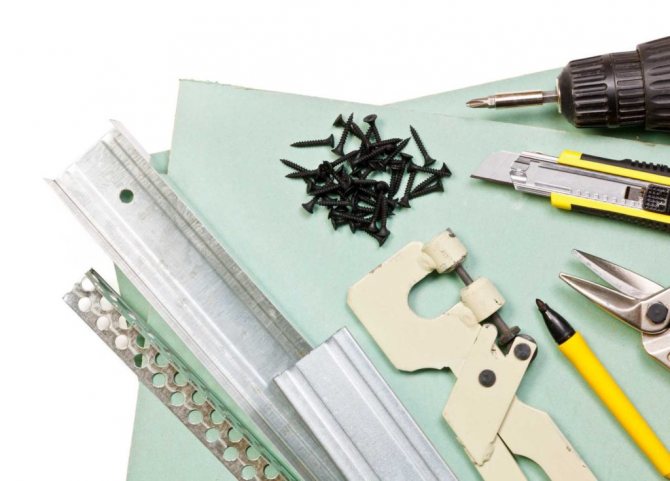

Together with communications, they close the meter, filters, taps, fitting connections. To have access to them, viewing windows are left. There should be enough space to replace or repair the assembly.
It is recommended to insulate closed pipes. In a confined space, condensation forms, spoiling the camouflage, walls. This is especially important for cold water pipes. For hot piping embedded in the wall, leave room for expansion. In both cases, they are covered with a foam rubber or thermoflex casing. For cold pipes, this is thermal insulation, for hot pipes, in addition, space for expansion.
Water supply
- Is it possible to sew up the pipes responsible for the water supply in the toilet
?
If you have a centralized hot water supply, then the same restrictions apply to the DHW riser as in the case of central heating. In no case should the steel risers of hot water and cold water be sewn up: after the first leak, you will have to make repeated repairs.
I will clarify: in cold water, to replace the riser, which will be removed into a niche, you can safely use any pipes with maintenance-free connections. Due to the peculiarities of the configuration of the cold water system, a water hammer is impossible in it: the air in the risers and connections during filling plays the role of a damper, while the hot water system at startup is often bypassed for reset.
If, at the same time, the permeability of the vent is lower than that of the valve element through which the circuit is filled, then a water hammer occurs at the moment when the remaining air is displaced from the circuit.
- And the pipes in the bathroom should be put in a box.
?
Again, in the event that all connections of the cold water supply and hot water supply are maintenance-free. Steel pipes cannot be sewn up with a non-separable box.
- How to sew up pipes in a toilet so that condensation does not collect on them
?
Install ventilation grilles above the floor and ceiling. Convection through them will provide heating of the air with a hot water riser.
Requirements for materials for pipe termination
Requirements for materials for masking pipes in the bathroom.
- A room with limited space, so it is not cluttered with heavy frames. The cladding is fixed on a light metal profile or wooden slats.
- The specificity of the room is in constant high humidity. Choose a material that does not absorb water and does not deform from it.
- When cleaning, it is difficult to do without detergents with chemical reagents. It is important that the material does not react with them, the surface retains the quality of the decorative finish.
The requirements are met by such modern materials as MDF, plastic panels, moisture-resistant drywall.
Before hiding the pipes, it is necessary to decide with what material the event will be carried out.It is not entirely correct to choose products based on aesthetic components, since they must have other properties as well.
There are several characteristics that need to be noted.
- A small mass of products. The design should not clutter up a small area of the room, so materials should be chosen that do not require a massive frame. You can use simple wood slats, metal profiles.
- Resistant to moisture. A bathroom is a room with a high level of humidity. The material with which the water pipes will be closed must be resistant to such conditions. It is necessary to choose products that are not prone to deformation and moisture absorption.
- Resistant to chemicals. To maintain the sanitary condition in the rooms, household chemicals are used, therefore, the facing material must withstand contact with such products. For this, a decorative MDF plate, plastic panels, moisture-resistant gypsum board are suitable.
To decorate unsightly pipes, you can use decorative grade hardboard plates, which are covered with melamine laminate or volumetric gypsum panels. The last option is distinguished by a variety of textures that realistically imitate wood, bricks, mosaic patterns. They allow not only to sew up the water supply, but also give the room an original appearance. Before sheathing, make sure that the pipeline is in good condition.
And you should also familiarize yourself with the types of water supply.
There are three types of pipes:
- sewerage;
- hot and cold water supply;
- heating system, heated towel rail.
Not every type of communication can be easily hidden behind the decoration, even if the layout of the premises involves such events. Difficulties may lie in building codes, because they do not allow pipes to be hidden under the plaster, which are connected using a surge coupling or a lock. All detachable connections must be freely accessible to quickly eliminate the leak. Cold water pipes made of metal, as well as cast iron sewer blocks, often form condensation, so they must be hidden in such a way that there is a minimum amount of air in this area that will circulate and remove moisture. These features should be taken into account and, on their basis, carry out the selection of material for work.
Sewerage
- Is it possible to close sewer pipes in an apartment with a non-separable box
?
In principle, yes, but with a couple of caveats:
- Socket connections must be assembled on silicone. Rubber sealing rings dry out and leak when the drain system is idle for a long time without water, while the sealant will retain water;
- Siphon connections to plumbing fixtures must be accessible. Through the sockets, the sewage system is cleared when blockages.
In addition, SNiP 2.04.01-85 mentions another instruction: a hatch with a size of at least 30x40 cm must be installed opposite the revision in the sewer riser.
However: it is much easier to clean the fat plugs not with a cable, but simply by disassembling the pipes and shaking out the fat into the trash can. Of course, this can only be done with an open sewer installation.
- How to close pipes with plasterboard in a private house when they are long
?
There is only one difference from the apartment: every 8-10 meters of the sewer bed, it should be torn by tees or revisions for cleaning, opposite which hatches are mounted in the box.
Arrangement of hatches
Arrangement of a viewing window in a box that allows you to hide pipes in the toilet will provide full access to valves, metering devices, complex nodes in the pipeline system, for inspection of the sewer pipe in the bathroom. You can install a plastic removable hatch with a door.This does not require special preparation, you just need to cut a hole in the drywall with a construction knife 1-2 mm larger than the parameters of the hatch. The hatch can be glued around the perimeter on liquid nails, or simply inserted into the opening.
The second option for the viewing window is the installation of a secret hatch, which creates a hidden opening that fully preserves the aesthetics of the interior. The design of such a hatch consists of a metal frame with a plasterboard door, the decoration of which is made in the style of the surrounding walls. Such hatches can be pasted over with wallpaper and even tiled on them.
The installation of invisible hatches is carried out before the box is sewn with drywall, since the hatch frame is fastened with self-tapping screws to the metal frame of the box. Measure the parameters of the manhole cover. At the installation site of the hatch, form a frame from the profiles. The frame is inserted into the frame and fixed to the metal profile with self-tapping screws (2 pieces on each side).
Markup
The markup of the future structure is carried out using:
- measuring tool
- tape measure, ruler, corner; - descriptive instrument
- a simple pencil, marker; - precision instrument
- building or laser level.
During this stage, it is advisable to adhere to the exact dimensions, limited to whole centimeters. Millimeters are used only in the case of a particularly precise design, for example, for an established interior project.
Before you sew up the battery with drywall and get rid of its unpleasant appearance, you need to decide for which method of termination to carry out the marking:
- a box is a simpler and faster method of work (only the area of the battery is sealed and, literally, 12-20 cm outside of it);
- wall is a more time-consuming method (the wall with the radiator installed is completely sealed; if the heating device is installed near the window, it is necessary to perform slopes).
In terms of the volume of work, the termination of batteries according to the first method is simpler: less material is used and a small number of construction processes are carried out. In the second case, even fewer construction processes are used, but more material is used.
Box
When installing a box, the structure takes up little space, covering a little more space than the radiator itself. The depth of such a box depends on the width of the heater (most radiators are narrower than batteries with metal plates).
Note! The edges of the structure must protrude at least 10 cm beyond the edge of the radiator. Otherwise, it will not be possible to install a removable screen on the front side.
Instructions for marking the box:
- Depending on the required position of the structure, a horizontal strip is drawn. If the box hangs, measure the distance from the floor and draw a marking line using a level. If the structure rests on the floor, there will be 3 lines (two at the edges - depth, one front - the edge of the structure).
- It is necessary to set a corner to the bottom edge and draw vertical marks - we achieve a right angle. Using the level, we bring the vertical lines to the required size.
- The same marks are marked on the vertical lines, between which a connecting segment is drawn.
The result should be a square or rectangle (in the case of support on the floor - additional marking of the base).
Wall
Analyzing the room and thinking how to close the radiators and pipes with plasterboard and do it correctly, the decision to install an alternative wall comes naturally.
The essence of the solution - together with the radiator, the entire surface to which it is attached is covered. This method is wasteful, since you can get by with small amounts of material by arranging a point box. But the wall is the only way to hide the heater from the room with your own hands completely.
For the wall device, the frame is built to the entire height of the room:
- With the help of the level, several vertical lines are drawn on the base for the frame. Step - 60-100 cm. Mandatory lines for profiles in the corners of the room.
- From each vertical line it is necessary to draw a continuation to the floor. For this, a corner is used. The depth of the floor lines is equal to the width between the main wall and the alternate wall.
- Similar to the floor ones, lines are drawn on the ceiling - of equal depth and strictly parallel.
- The last marking lines are drawn above and below the heater, at a distance of 7-10 cm.
On the sides of the radiator, markings are also carried out - along the perimeter of the device, profiles are needed into which a removable screen will be installed. But to get rid of unnecessary work, you can draw the main markings (which are the entire height of the room) directly on the sides of the radiator.
Best ways to make pipes invisible
There are many ways to disguise the piping in the bathroom. The options can be simple or complicated, depending on the selected materials and type of construction.
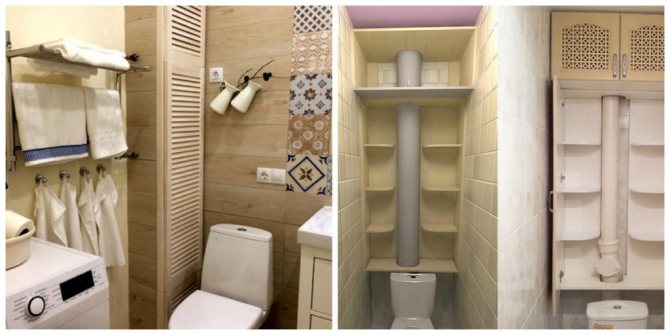

Options for masking pipes in the bathroom
- The snow-white color retains the paint for radiators for a long time. Unlike others, it does not turn yellow at elevated temperatures.
- If you choose other shades, then metal pipelines are painted with alkyd, acrylic or water-dispersion compositions.
- For plastic pipes, acetone-free paints are chosen, which are diluted with white spirit or have a water base.
- For pipelines with hot water, heat-resistant compounds are chosen.
The metal pipes are pre-cleaned, dust is removed, covered with a primer, for example GF-2. It improves adhesion to the base paint, protects against rust. It is not necessary to prime the plastic, the adhesion to it is already good. Condensation is possible on cold pipes - it is removed by wiping dry.
The bathroom uses green moisture-resistant drywall. A frame is mounted from a special metal profile, to which the gypsum board is screwed. Then the surface is finished by plastering followed by painting or tiles are glued. Vertical and horizontal pipelines can be sewn up in this way.
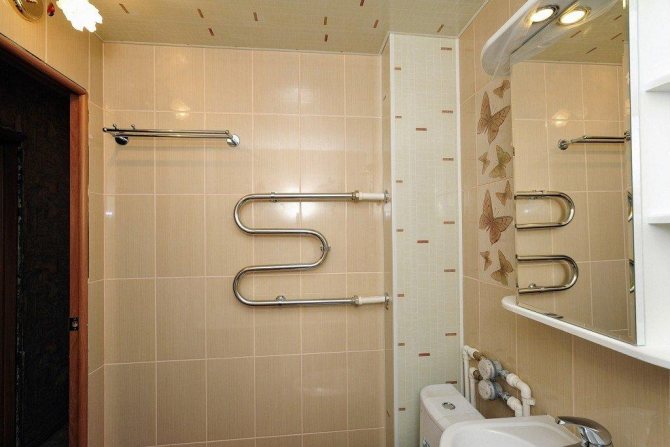

Masking pipes with a plasterboard box.
Algorithm of actions:
- At a distance of 3-5 cm from the most protruding parts of the water supply or sewage system, lines are drawn. They use a level, otherwise defects on the finished box will be strongly visible.
- Holes for dowels are drilled along the lines. The guides are fastened with self-tapping screws, and crossbars to them after 15-20 cm. For fixing, special fasteners are used - crabs.
- According to the size of the frame, strips of drywall are cut, screwed to the metal profile with self-tapping screws. Hats are recessed by 1 mm. In order not to tighten more than necessary, use a special drywall bat.
- An inspection hatch is made by cutting out with a construction knife in a box. The door is hinged.
- The edges of the seams are chamfered, sealed with putty, and a special tape is glued on top. Then putty the entire surface, rub.
We invite you to familiarize yourself with the Stretch ceiling technology - manufacturing features, methods of stretching the installation, details in the photo and video
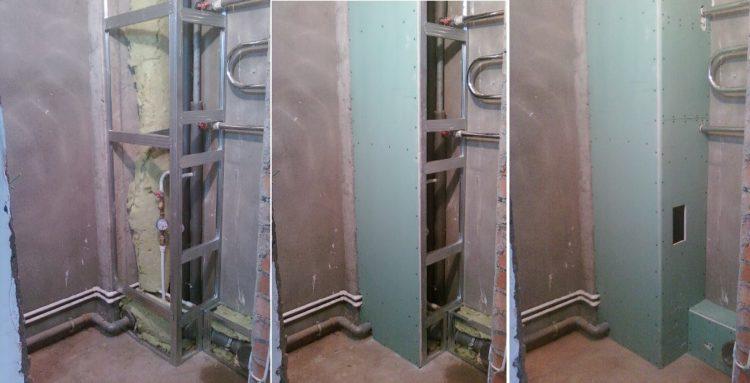

Step-by-step steps for making a drywall box.
Ventilation holes are made from above in a box with hidden heating pipes or with hot water. If taps are hidden behind the casing, there are threaded connections or on fittings, a small hole is drilled in the lower part, which will help you quickly see the leak.
There are many options for using drywall to mask communications and plumbing. A false wall is made of it, with which part of the room is fenced off. More often it is a toilet in a combined bathroom. The plasterboard frame covers the corrugation that connects the plumbing to the riser. GKL is used for the manufacture of screens for the bath.
The method is simple, but expensive. It is required to purchase high-quality moisture-resistant furniture that will not crack after a few years.In addition, it must fit in size: height, width, and not be too deep. In some cases, furniture is ordered. Such disguise not only looks beautiful, but also carries an additional functional load. It hides personal hygiene products, household chemicals and other things.
You can hide pipes in the bathroom with furniture.
Standard furniture requires minor alterations that are easy to do on your own. The back wall is removed, but not completely. Triangles are cut from the fiberboard, which it is closed with. They are fixed with self-tapping screws at the corners of the entire structure and individual sections. This gives stability, the furniture will not wobble. In addition, holes for pipes are cut with a jigsaw.
In this way, by installing a pencil case, you can hide the riser. The cabinet under the washbasin will hide the supply of communications to the mixer. Another option is a laundry basket instead of a bedside table. It is important here not to overdo it with furniture, so as not to use a lot of space, which is already so small in the bathroom.
You can hide the pipes behind the curbstone. masking pipes in the bathroom with furniture. Camouflage pipes in the toilet.
This is not gluing tiles to drywall, but fastening with self-tapping screws to a frame made of metal profiles or wooden slats. The design is collapsible, at any time you can remove a separate element to gain access to communications, then put it in place. The cladding with the same material as on the walls makes the camouflage invisible.
Facing the frame with tiles for masking pipes in the bathroom.
For work, you need a tile cutter or grinder with a diamond disc. A frame is erected by fixing it to the wall, floor and ceiling with special metal brackets. In order to cut the tile less, they try to make at least the front wall of the box according to the size of the tile. The edges must overlap one another; for this, the thickness of the material is taken into account.
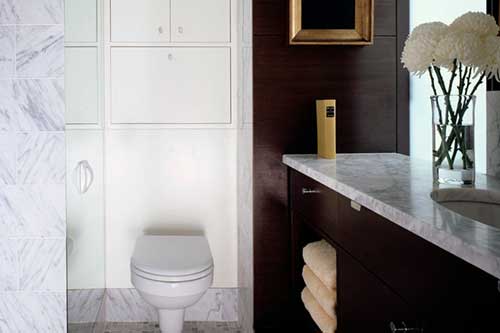

Having cut the tiles to size, start drilling holes. You will need 2 in each tile. They use a drill with speed control - they work at low speed. You will need a carbide-tipped lance drill. It slips off smooth glaze. To drill in the right place, stick a piece of scotch tape.
After installing all the elements, the corners are mounted, which simultaneously cover the caps of the screws. Opposite the communication nodes to which access is required, a door is placed.
Masking pipes with a screen made of plastic panels.
The material is one of the most successful: the most waterproof, lightweight, easy to install. The structure, if necessary, can be easily disassembled, then restored. Washes well, is not afraid of aggressive chemicals. A variety of colors and patterns allows you to complement the interior of the room. You can cover the sewer pipe, water supply with panels, make a screen for the bath.
Plastic is mounted on a frame made of metal profiles or wooden slats. First, markings are made using a level or a plumb line. The strips are fixed along the perimeter. In areas larger than 50 cm, profiles are added in the middle to increase the rigidity of the structure. Before sheathing on the first rail, the starting corner is fixed with self-tapping screws.
The panels are cut to length, the first is inserted into the molding. The wide shelf is directed towards the installation. The opposite side is fixed to the crate with staples or self-tapping screws. Further installation is carried out by inserting each next panel into the groove of the previous one. The locks securely connect the elements, creating a solid structure.
The top panel, if necessary, is cut to the desired size, inserted into the moldings. Their variety allows you to accurately arrange joints, corners, points of attachment to the wall, ceiling. Use internal or external, ceiling corners specially designed for these purposes.
The screen under the bathroom is made using a similar technology.The lower bar is fixed on the floor, the upper one - with one end on the wall, then after 40 cm spacers are installed. In a similar way, they hide the pipes suitable for the bath and the sink, which is located nearby. If you make a window, you get a place for storing various household items. Ceiling pipes can also be hidden in a similar manner.
Roller shutters for masking pipes in the bathroom.
Shutters for masking communications have an important advantage: easy access to pipes is quickly provided over a long distance. A special type of products is produced - sanitary ware. The curtain is made of synthetic fabrics with anti-static and water-repellent treatment. The range of color schemes is wide; a choice is available in accordance with the design of the room.
Lifting and lowering of the panel is carried out manually or by electric drive. In the latter case, the models must be of the cassette type, the mechanism is hidden in a special aluminum box. For curtain widths up to 52 cm, the mechanical drive is driven by a chain. For large sizes, a spring mechanism is installed.
Installation is possible in 2 ways: in a niche or on a frame attached to the wall. In the first case, a profile is installed along the perimeter of the niche in the same plane with the wall. Blinds are attached to it. If there is no natural niche with communications, they arrange a protruding box, the sides of which are covered with plasterboard, and revetted. A roller blind is installed on the front part.
Masking pipes with roller shutters. Brown roller shutters for pipes in the bathroom. Roller shutters for masking communications in the bathroom.
To ensure stable operation of the roller blind, the side profiles are mounted strictly vertically and in parallel. Minor distortions lead to seizing. The product is first assembled, then installed in place.
Installation of pipes into the wall
Installation of pipes into the wall in the bathroom is usually used in new buildings for major repairs.
The method is used in new buildings, during major repairs. Its positive side is that the dimensions of the room are preserved. The method consists in chipping the walls, laying in the grooves of communications. It is forbidden to use in panel houses, on thin partitions.
We suggest that you familiarize yourself with the drain under the bathroom how to assemble
A significant drawback is limited access to pipelines in an emergency. Therefore, pipes without connections are hidden in the grooves, locking and other devices are brought out. Pre-draw a plan, indicate the location of all elements. Parallel lines are drawn on the wall along the width of the pipelines with a slight increase. Free space is required to accommodate the insulating sleeves.
The grooves are made with a wall chaser - 2 at once. In the absence of such a tool, a grinder with a diamond disc is used. The building material between the slots is removed with a perforator, chisel. Garbage should be removed from the finished strobes, the surface should be covered with a primer. Pipes are laid, fixed in separate places with a solution. You should not immediately close it with plaster: for several days they observe whether leaks have appeared.
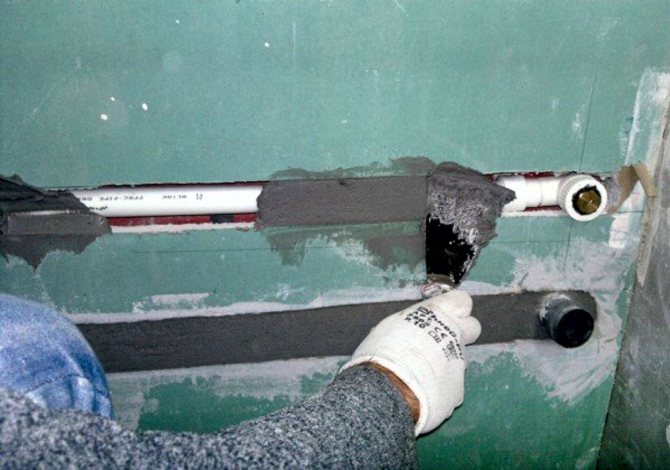

Fixing pipes with mortar.
Frame device
Before you close the heating battery with plasterboard, decorating the interior of the room with this, you need to arrange a frame. For its construction, channel-shaped metal profiles with a width of 60-70 mm are used.
In total, in the process of doing the work you will need:
- profiles - as the main frame;
- screws (40-60 mm) - fastening the structure;
- dowels (40-60 mm) - fastening in the surface;
- metal scissors - for cuts, if necessary, bending metal;
- pliers, screwdriver, drill or hammer drill - an auxiliary tool.
The profiles that are attached to the wall are attached first.
On our website you can watch a lot of videos on the construction of drywall frames, but the basic instructions are as follows:
- a metal profile is attached by either side or center to the marking line;
- a small outline is left on the wall with a screwdriver;
- a perforator makes a recess for the size of the mount
- a dowel is inserted into the hole made;
- a profile is attached to the prepared place;
- the screw is fastened.
After adhering the metal to the wall, the outlines are made in 15-25 cm increments. The holes are prepared immediately for the entire profile.
All the necessary parts of the frame are attached by the described process. In the case of fixing a corner of two elements, you need to trim the necessary parts with metal scissors.
When the parts that are attached to the wall are installed, go to the depth of the frame:
- we cut parts of the profiles of the required size;
- cut both edges of the element at the bend by 4-5 cm;
- bend the middle down, and cut the sides to the width of the profile channel shelf;
- we attach the segments to the edges of the main long elements at an angle of 90 degrees towards the room.
The last part - connecting the upper and lower short parts, elements.
Note! When installing a wall covering the battery, long vertical metal elements are used, so two short ones at the top and bottom will not be enough - at least 4-5 pieces are needed.
The finished frame should represent a strong structure, not stagger. If the frame is wobbling, it means that the fastening was not done well, or there are not enough additional short elements.
Installation of the structure
The most difficult stages of solving the question of how to close the heating battery with plasterboard and not deprive the room of heat are left behind. If everything is prepared, installation is a simple procedure.
Fastening of drywall is carried out according to the following method:
- a sheet of material is attached to the metal base;
- the cutting point is marked with a descriptive tool - this is how the material is marked into the necessary pieces;
- the prepared part is attached to the corresponding part of the frame and fastened with a screw.
The pitch of the screws when fastening the material in the battery box is 10-15 cm, an example of the location of the fasteners can be seen in the photo above.
It is better to prepare and fasten one part of the material, if you cook everything at once, you can make a mistake because of the corners protruding in some places.
Note! When screwing in the screw, it is important to feel the measure - if you put the fastener too deep, you can damage the front side of the drywall.
A removable screen should cover the radiator for ventilation and heat transfer to the room. The first part, the inner one, is attached to the metal even before working with drywall. Then the main material is arranged, and the last step is to put on the removable, external, part of the screen.
We will find out if it is possible to close the gas pipe with drywall (video)
Do not forget that the box is a simple structure consisting of a frame and drywall sheets. You can use the box in the kitchen, in any living room, in a room with high humidity. Plasterboard cladding has a very aesthetic appearance, and also serves as a sound insulation. When designing a box, one should take into account the strength of the material and its intended purpose. It is very simple to install the box with your own hands, without using special skills and abilities. Summing up, it can be noted that a drywall box is a good method to hide any pipes.
- Author: admin
Rate the article:
- 5
- 4
- 3
- 2
- 1
(0 votes, average: 0 out of 5)
Share with your friends!
